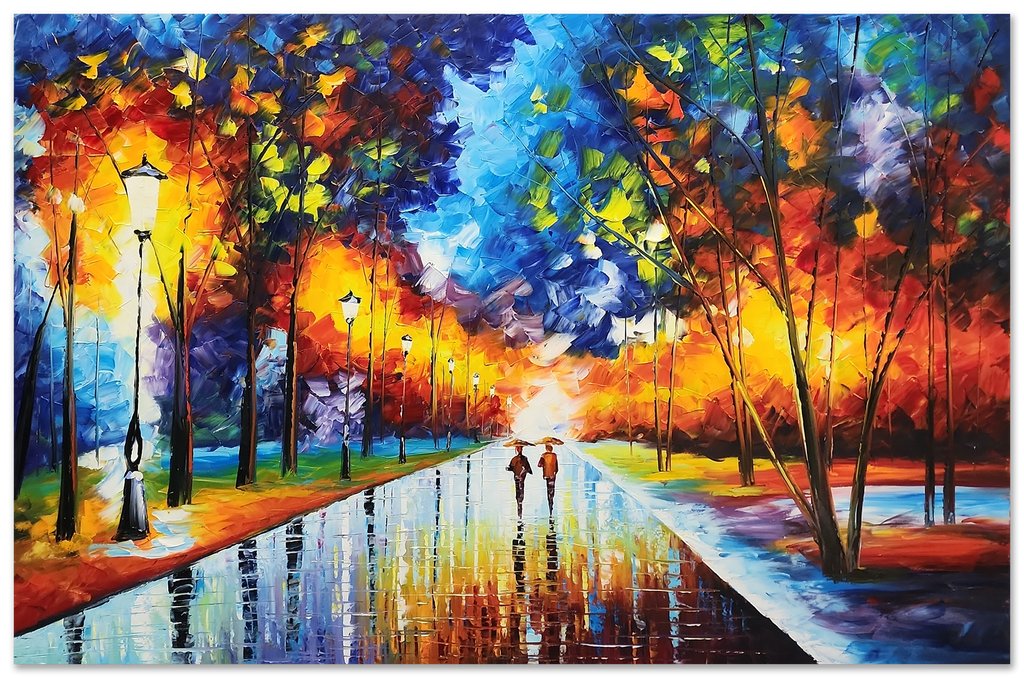
Oil painting is a medium that has evolved dramatically over the centuries, leading to the emergence of various styles, each with its own distinct characteristics and historical significance. From the vibrant and fleeting moments captured by Impressionists to the bold and expressive forms of Abstract art, oil painting offers a rich tapestry of techniques and copias de cuadros de pintores famosos perspectives. This article explores these diverse styles, providing a comprehensive overview of their key features and contributions to the world of art.
Impressionism: Capturing Fleeting Moments
Impressionism, which emerged in the late 19th century, marked a revolutionary shift in painting techniques and aesthetics. Characterized by its focus on capturing the fleeting effects of light and color, Impressionist paintings often depict everyday scenes with an emphasis on the artist’s immediate perception. Artists like Claude Monet and Edgar Degas employed loose brushwork and vibrant color palettes to convey the transience of moments. The use of broken color and visible brushstrokes allowed for a dynamic and spontaneous representation of the natural world, breaking away from the detailed and realistic portrayals of previous art movements.
Post-Impressionism: Expanding Emotional Expression
Building upon the foundation laid by Impressionism, the Post-Impressionist movement of the late 19th and early 20th centuries introduced a greater emphasis on emotional expression and symbolic content. Artists such as Vincent van Gogh and Paul Cézanne explored new ways to convey personal and psychological depth through their work. Van Gogh’s swirling, expressive brushstrokes and bold color choices created powerful emotional resonance, while Cézanne’s geometric approach to form and color laid the groundwork for future abstraction. This period marked a transition from the focus on light and atmosphere to a more subjective and interpretive approach to painting.
Fauvism: The power of Color
The Fauvist movement, which emerged in the early 20th century, is known for its radical use of color and form. Led by artists like Henri Matisse and André Derain, Fauvism embraced vivid, non-naturalistic colors and bold brushwork to convey emotional intensity and individuality. The Fauvists rejected the constraints of representational art, instead using color as a primary means of expression. This approach emphasized the painter’s personal response to the subject rather than a faithful depiction, making color and form central to the artistic message.
Cubism: Deconstructing Form
Cubism, pioneered by Pablo Picasso and Georges Braque in the early 20th century, revolutionized the way artists approached form and perspective. By deconstructing objects into geometric shapes and presenting multiple viewpoints simultaneously, Cubism challenged traditional notions of representation. This innovative style fragmented forms and reassembled them in abstract ways, allowing viewers to perceive the subject from various angles. Cubism can be divided into two phases: Analytic Cubism, which focused on breaking down objects into their component parts, and Synthetic Cubism, which incorporated collage elements and more vivid colors.
Surrealism: The Realm of the Unconscious
Surrealism, which flourished in the 1920s and 1930s, delved into the realm of dreams and the unconscious mind. Influenced by Freudian theories, Surrealist artists like Salvador Dalí and René Magritte created fantastical and often bizarre imagery that defied logical explanation. Their work aimed to unlock the hidden depths of the human psyche, presenting dreamlike scenes and irrational juxtapositions. Through techniques such as meticulous detail and unexpected combinations, Surrealism sought to explore the inner workings of the mind and challenge conventional perceptions of reality.
Abstract Expressionism: Embracing Spontaneity
Emerging in the mid-20th century, Abstract Expressionism represented a significant shift towards non-representational art. Artists such as Jackson Pollock and Mark Rothko emphasized spontaneous, intuitive creation and the exploration of emotional and psychological states. Abstract Expressionism is characterized by its emphasis on process, with artists often using large canvases and dynamic brushwork to express their inner experiences. The movement celebrates the act of painting itself, allowing the physicality of the medium and the artist’s emotional engagement to take center stage.
Contemporary Trends: Blending Styles and Media
Today, the boundaries between different styles in oil painting are increasingly fluid. Contemporary artists often blend elements from various historical movements, incorporating techniques from Impressionism, Abstract Expressionism, and other styles into their work. This eclectic approach reflects the diverse and global nature of the current art world, where traditional and innovative practices coexist. Contemporary oil painters might experiment with mixed media, digital elements, or unconventional materials, pushing the boundaries of what oil painting can be.
Conclusion: The Ever-Evolving Art form
Oil painting, with its rich history and diverse styles, continues to be a dynamic and evolving medium. From the light-drenched scenes of Impressionism to the experimental forms of Abstract art, each style offers unique insights into the artist’s vision and the cultural context of its time. By exploring these styles, both artists and art enthusiasts can gain a deeper appreciation for the versatility and expressive power of oil painting, embracing its potential to capture the myriad facets of human experience and creativity.